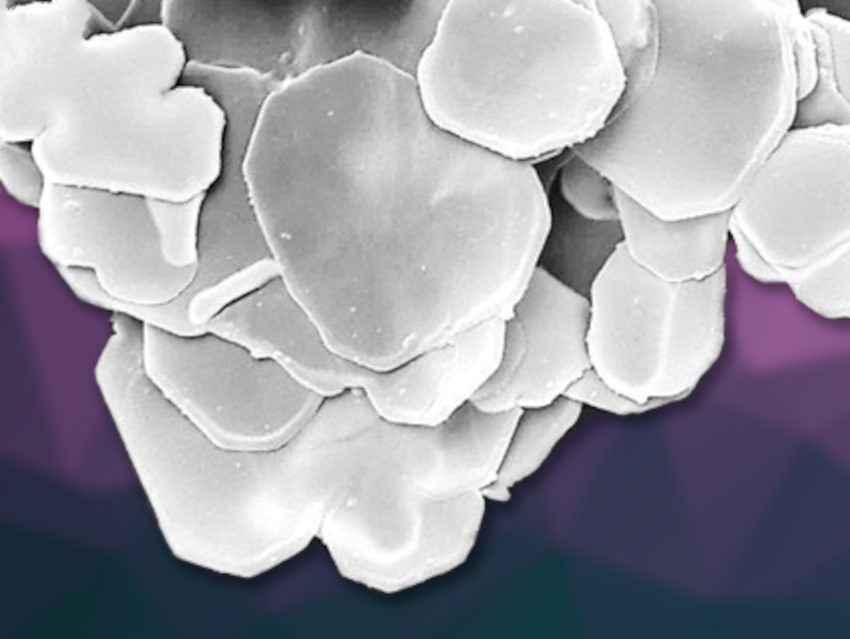Potassium-ion batteries could be useful alternatives to the widely used lithium-ion batteries for low-cost and large-scale energy storage applications. The comparatively large size of potassium ions is a challenge for the electrode materials of potassium-ion batteries: The repeated insertion and extraction of K+ can cause large volume changes and lead to electrode failure. Metallic bismuth, for example, has a high theoretical capacity for potassium-ion batteries, but the volume changes lead to low cycling stabilities.
Songping Wu, Key Lab of Guangdong High Property & Functional Polymer Materials and Guangdong Key Laboratory of Fuel Cell Technology, Guangzhou, China, and colleagues have developed an improved bismuth-based electrode material, i.e., 2D bismuth@N-doped carbon sheets (2D Bi@NOC, pictured). The team first prepared BiOBr sheets as templates using hydrothermal methods. These templates were coated with a polydopamine (PDA) layer and then carbonized to obtain Bi sheets that are encapsulated in thin shells of N-doped carbon.

The synthesized material features robust Bi–O–C bonds and the carbon layer has multiple internal voids. The electrode material shows fast electrochemical kinetics, favorable cycling stability, and good potassium storage capabilities. It can accommodate the expansion during the charge/discharge processes due to the flexible carbon shells with void space.
- 2D Bismuth@N‐Doped Carbon Sheets for Ultrahigh Rate and Stable Potassium Storage,
Anding Xu, Qi Zhu, Guilan Li, Caihong Gong, Xue Li, Huaming Chen, Jie Cui, Songping Wu, Zhiguang Xu, Yurong Yan,
Small 2022.
https://doi.org/10.1002/smll.202203976



